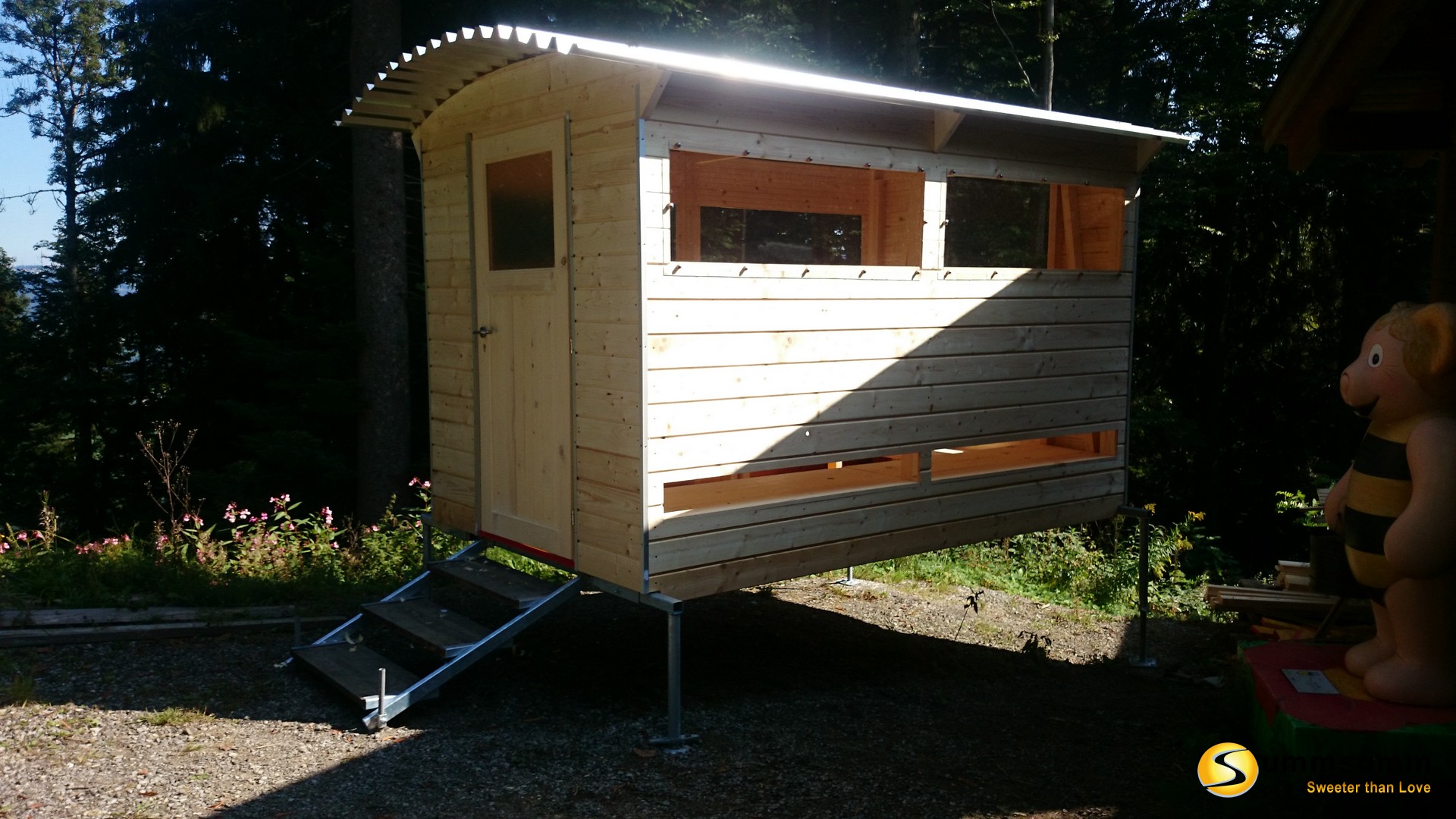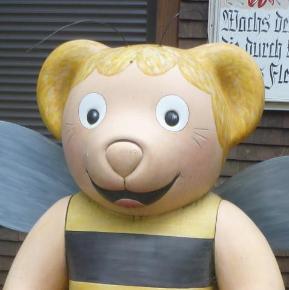
BeeMobil - The mobile apiary
The BeeMobil is a mobile apiary that offers space for 13 colonies or 25 cuttings and can be easily moved to a new location with a car trailer.
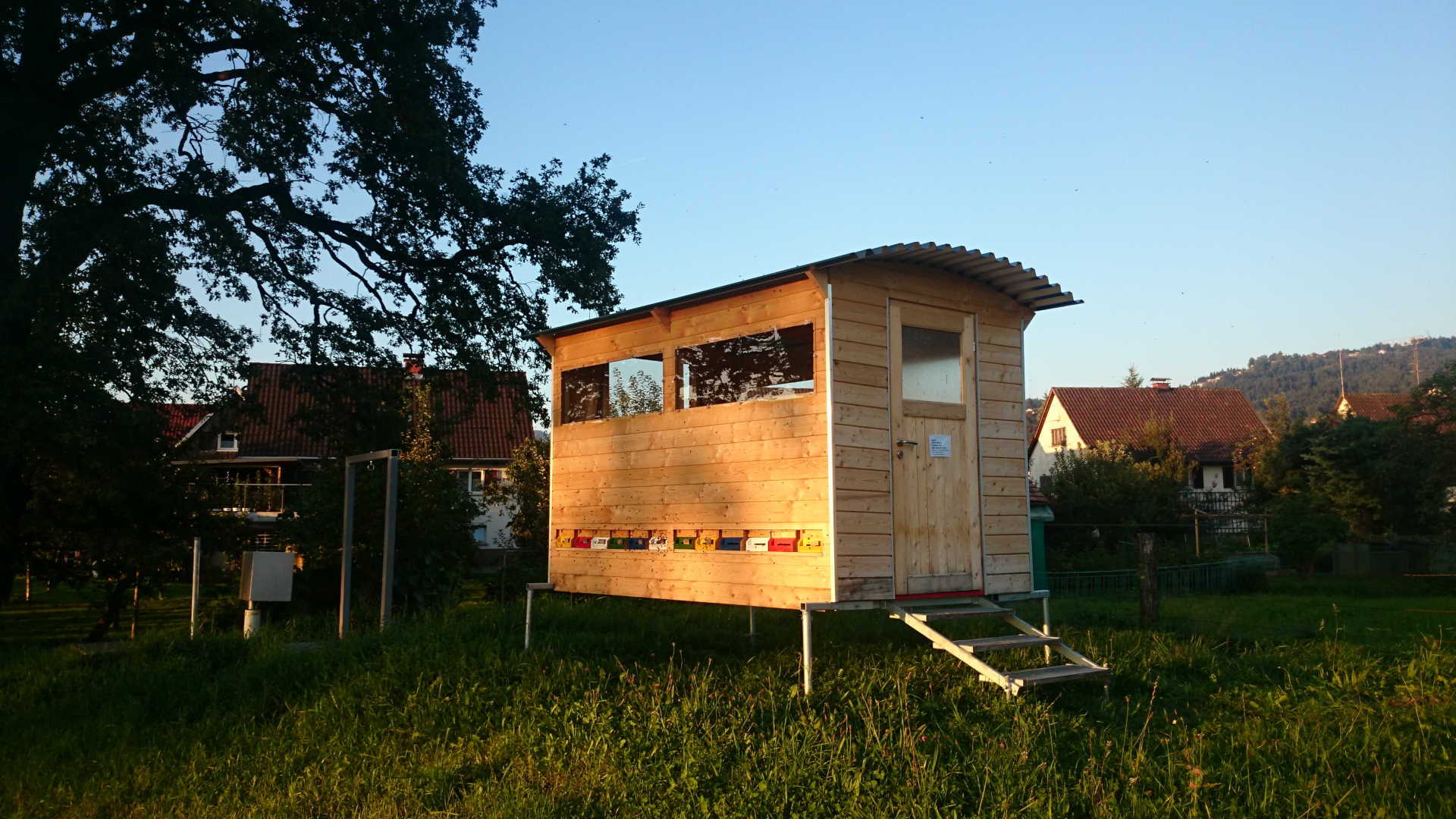
Materialliste
Beschreibung
Walking with colonies of bees can significantly increase honey yield, as the bees are brought to where they can collect nectar. Adjusting the colonies is very labor-intensive and usually requires an assistant to help carry the hive. Since the bees have to be adjusted in the early morning hours, it is often difficult to find someone.
The BeeMobil is therefore the ideal solution for every traveling beekeeper. It can be lifted by one person with an off-road jack and loaded onto a car trailer. All the bee colonies remain in the apiary. Only the entrance holes have to be closed and the colonies have to be secured with belts to prevent them from slipping.
Aufbau und Hardware
Substructure:
The two long rectangular shaped tubes are welded to the two shorter ones to form a frame ( instructional video for welding a frame ). The third shaped tube is welded to the frame in the middle for reinforcement. A hole with a diameter of 10 mm is drilled in the middle of each of the four short square shaped tubes, onto which an M10 nut is then welded. These are used to fix the posts using the M10 x 20 mm hexagon screws. Now the short, square shaped tubes can also be welded to the frame.
For each of the four posts, a round shaped tube is welded to a square shaped tube at a 90 ° angle. The frame and the four posts are then first galvanized with the stair parts.
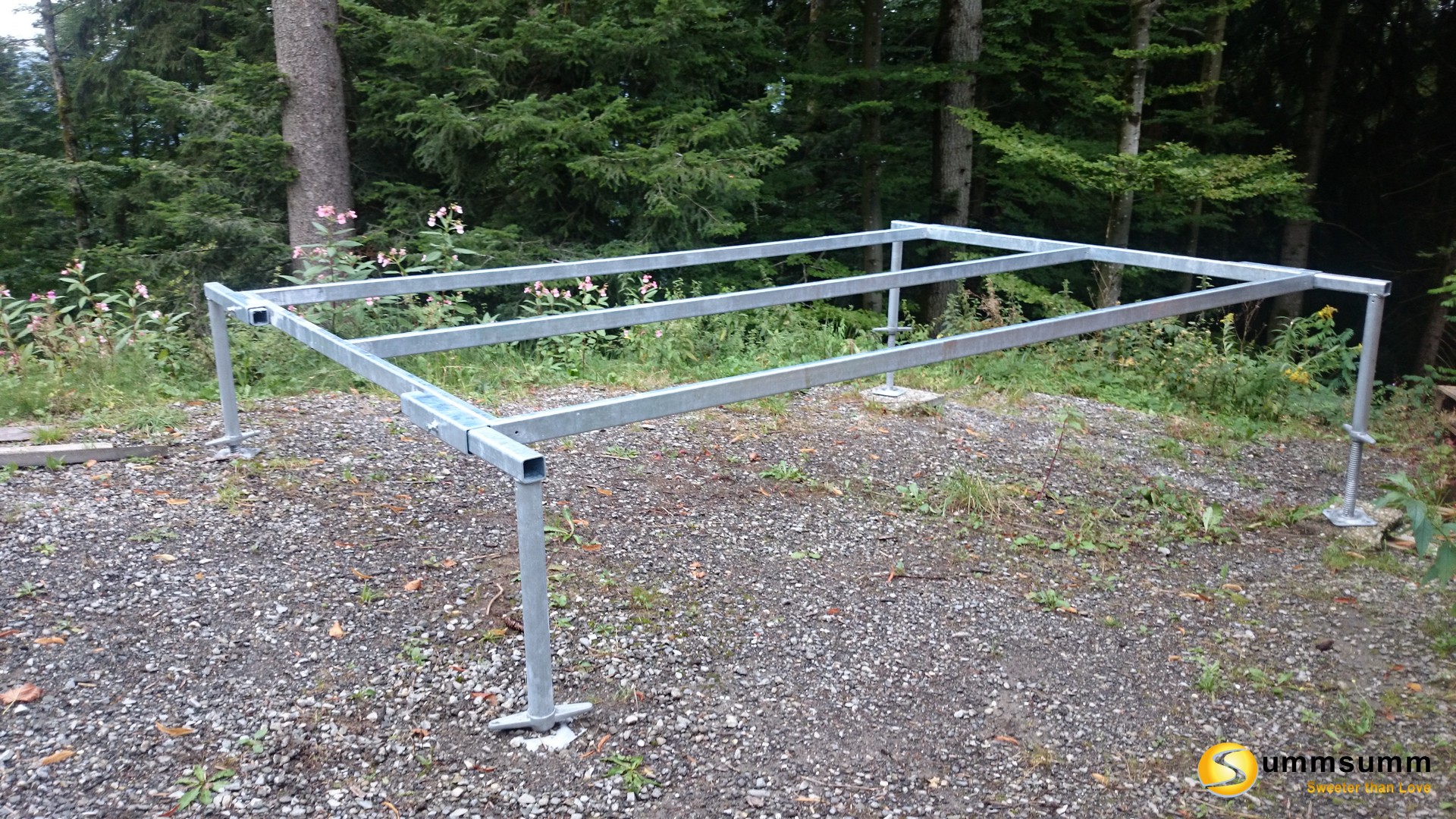
Stairway:
For the stairs, the short rectangular shaped tubes are welded to the U-profiles and 2 short square shaped tubes each. A 10 mm hole is then drilled into each of the short shaped tubes and an M10 nut is welded onto it. This is used to fix the small posts. For the small posts, a short tube with a diameter of 20 mm is welded to the center of the 100 mm x 100 mm sheet at a right angle. The stair parts are then also galvanized.
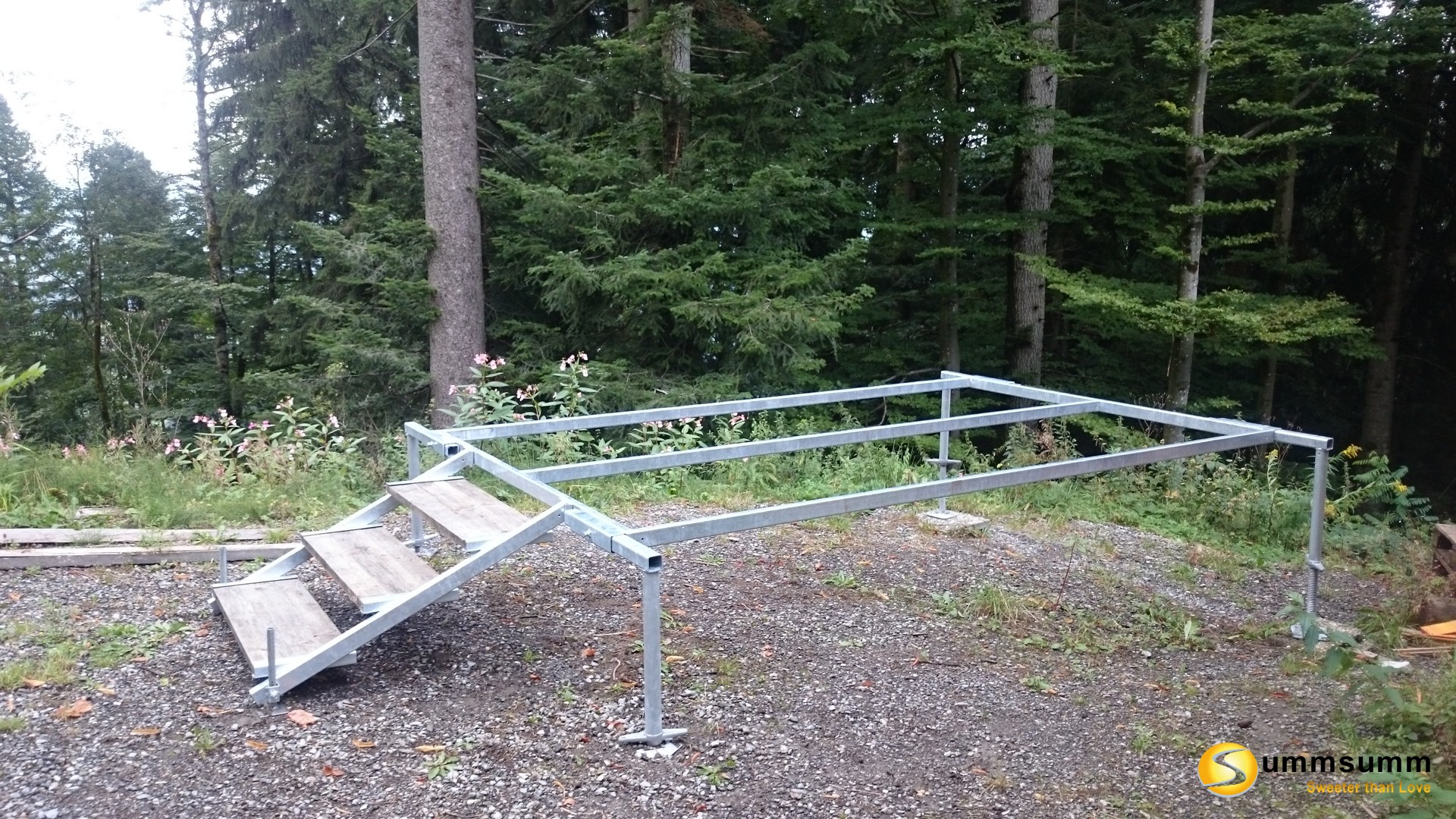
Floor:
For the floor, the 2 m long formwork panels are sawn to a length of 1.9 m. The first formwork panel is then fixed flush with the outer edge of the frame with two screw prongs. Then two holes with a diameter of 5 mm are drilled through the formwork panel and the steel frame on both sides and in the middle and then countersunk with a countersunk drill so that the countersunk screws can then be screwed in flush with the floor. Before doing this, threads have to be turned in all holes with an M6 thread cutter. Now the formwork panel can be screwed with 6 countersunk head screws M6. This is how all formwork panels are screwed to the frame. Of course, the last one still has to be sawn to the remaining width.
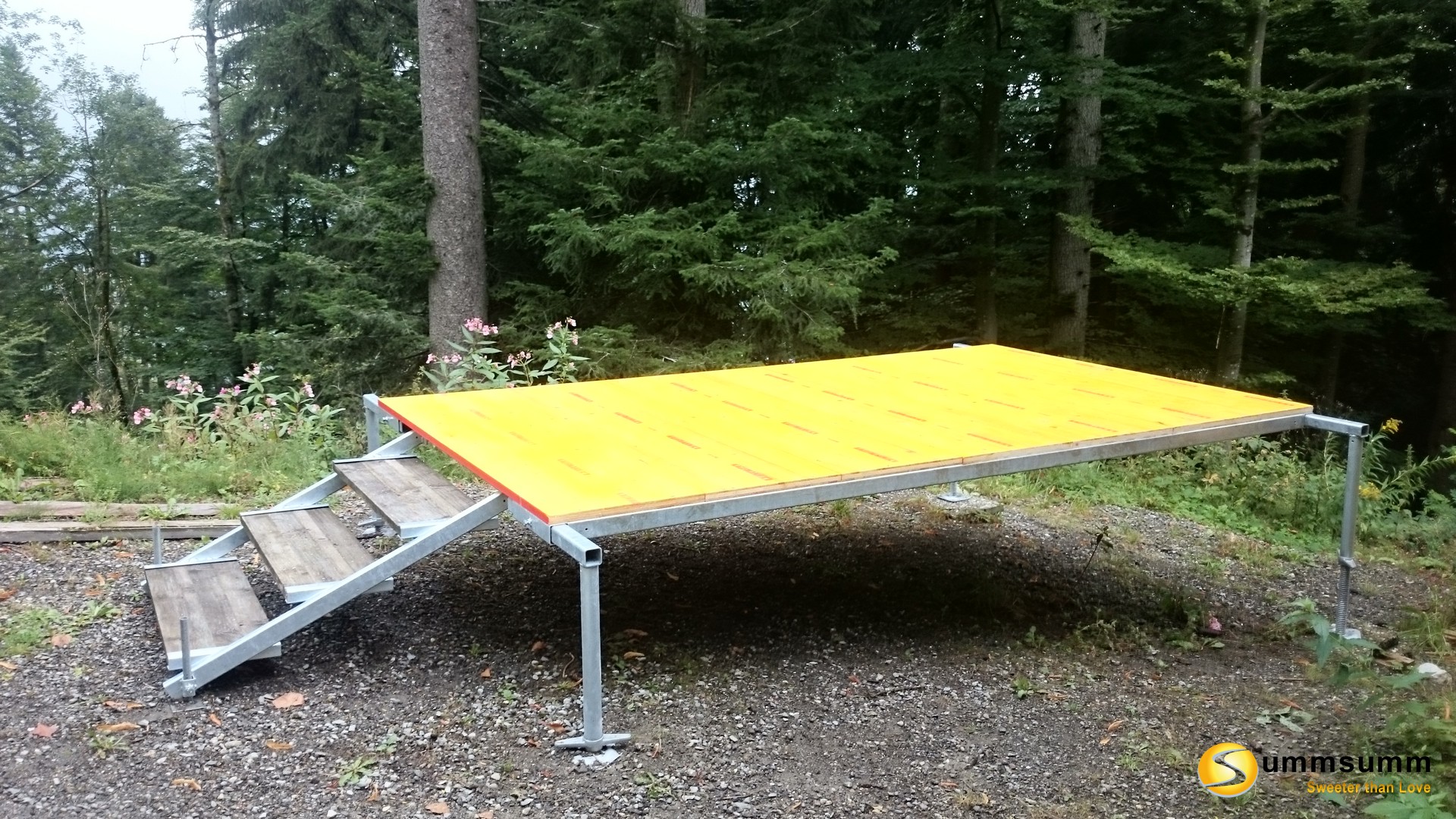
Side reinforcement:
The 4 m building boards are sawn to a length of 3.2 m. At each of the two lower corners, 6.5 cm squares are sawn out with a jigsaw. Now the building board is fixed flush on the side edges and on the lower edge with 2 screw clamps on the frame. A total of 7 holes with a diameter of 10 mm are now drilled through the center of the steel frame and the building board at regular intervals. To countersink the M10 cylinder head screws, each hole must be re-drilled about 10 mm deep with a 16 mm wood drill. The M10 cylinder head screws are now inserted through the building board and the steel frame and screwed tight with a washer and nut.
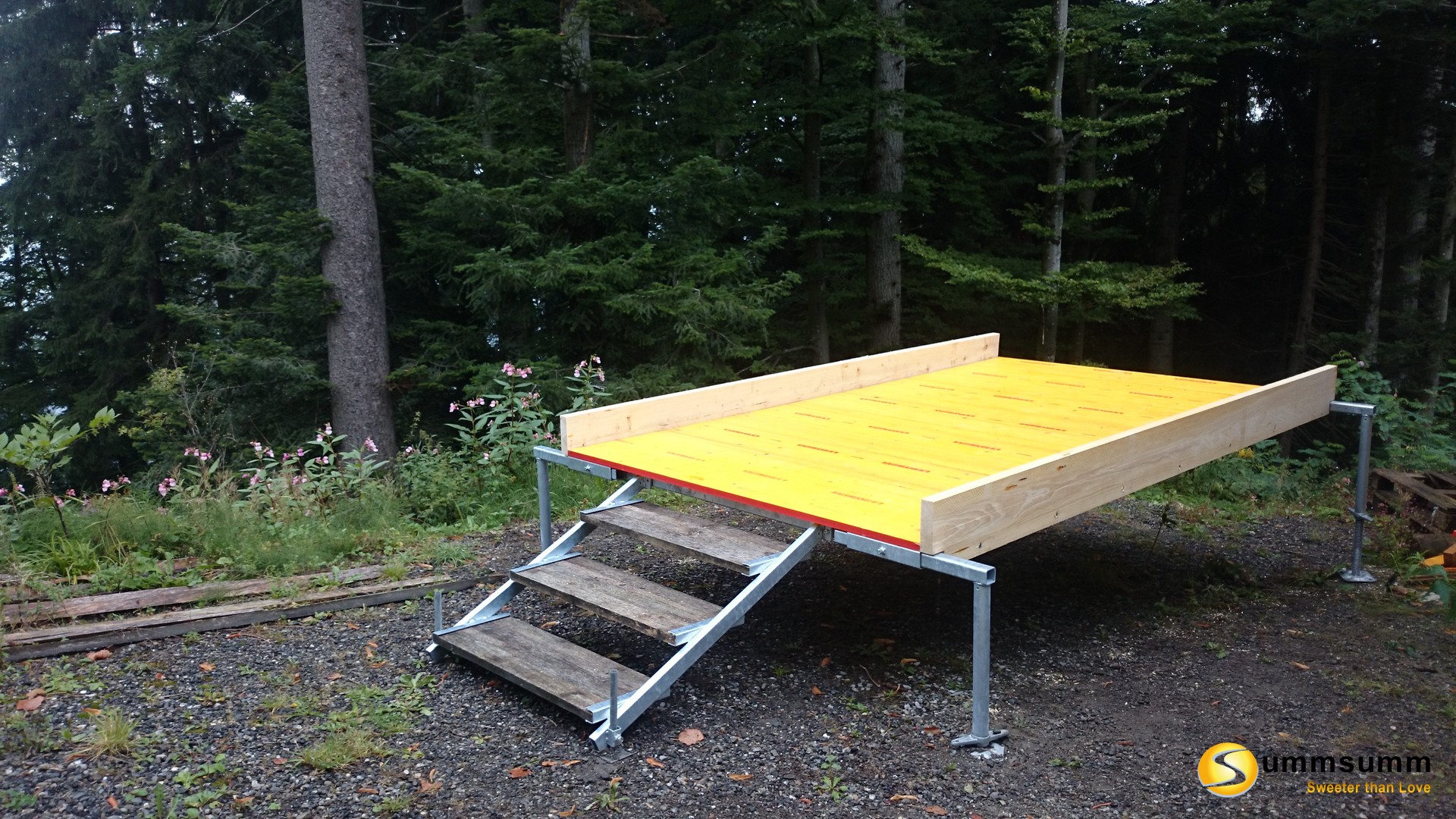
Body construction:
In the next step, posts with a height of 1.99 m at a right angle to the floor are attached to all four corners and in each case in the middle with the help of the connecting brackets. In addition, two additional uprights are attached at the front and rear at a distance equal to the width of the door.
For the roof construction, two building planks are sawn to size 3 by 1.9 m and a sheet is cut out using a jigsaw or band saw. These are connected to the posts with the 140 mm screws.
To increase the lateral stability, 2 cross struts are added to the front and rear walls. (see picture walls)
In order to achieve a height of 25 cm for the platform, the two side reinforcements are increased by 10 cm. For this purpose, a building board is sawn to size 2 by 100 mm wide and 3.2 m long. On the upper side, 5 cm squares are sawn out, flush with the edge posts, in the middle and flush with the central posts on both sides. The transverse battens for the platform are then inserted here.
All 6 posts are now reinforced with a second construction timber so that the paneling for the walls can be attached directly.
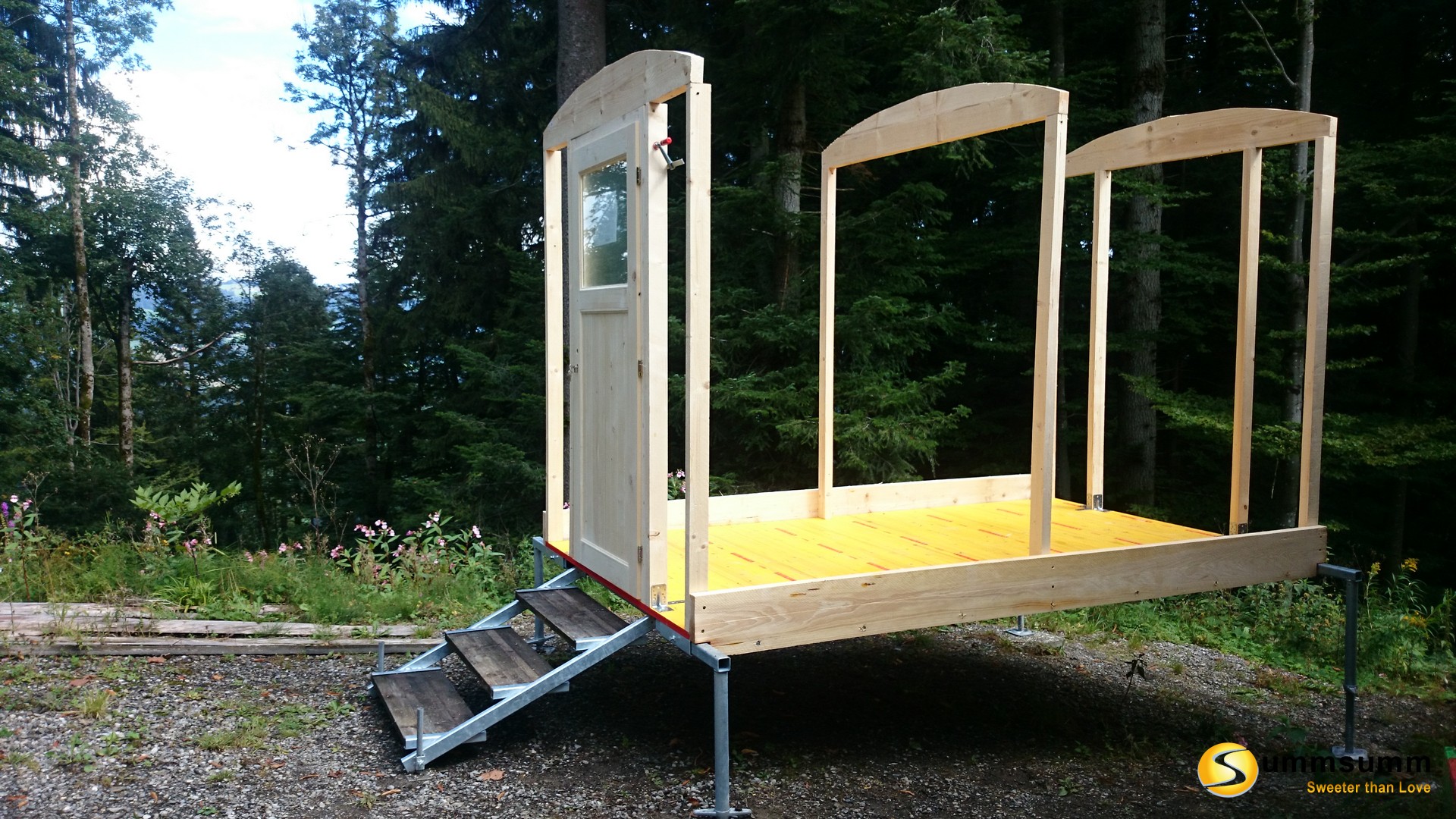
Pedestal:
For the pedestal we need 12 square timbers with a length of 55 cm and 12 square timbers with a length of 18.5 cm. These are sawn from the rest of the construction timber. The 55 cm long square timbers are sawn out on one side so that a tenon of 5 cm x 5 cm remains. These then fit exactly into the notches in the side reinforcement. The other end is connected to the 18.5 cm square timber using a 140 mm screw. This should create a slight incline towards the entrance hole. 20 mm boards or 27 mm 3-layer panels can now be laid.
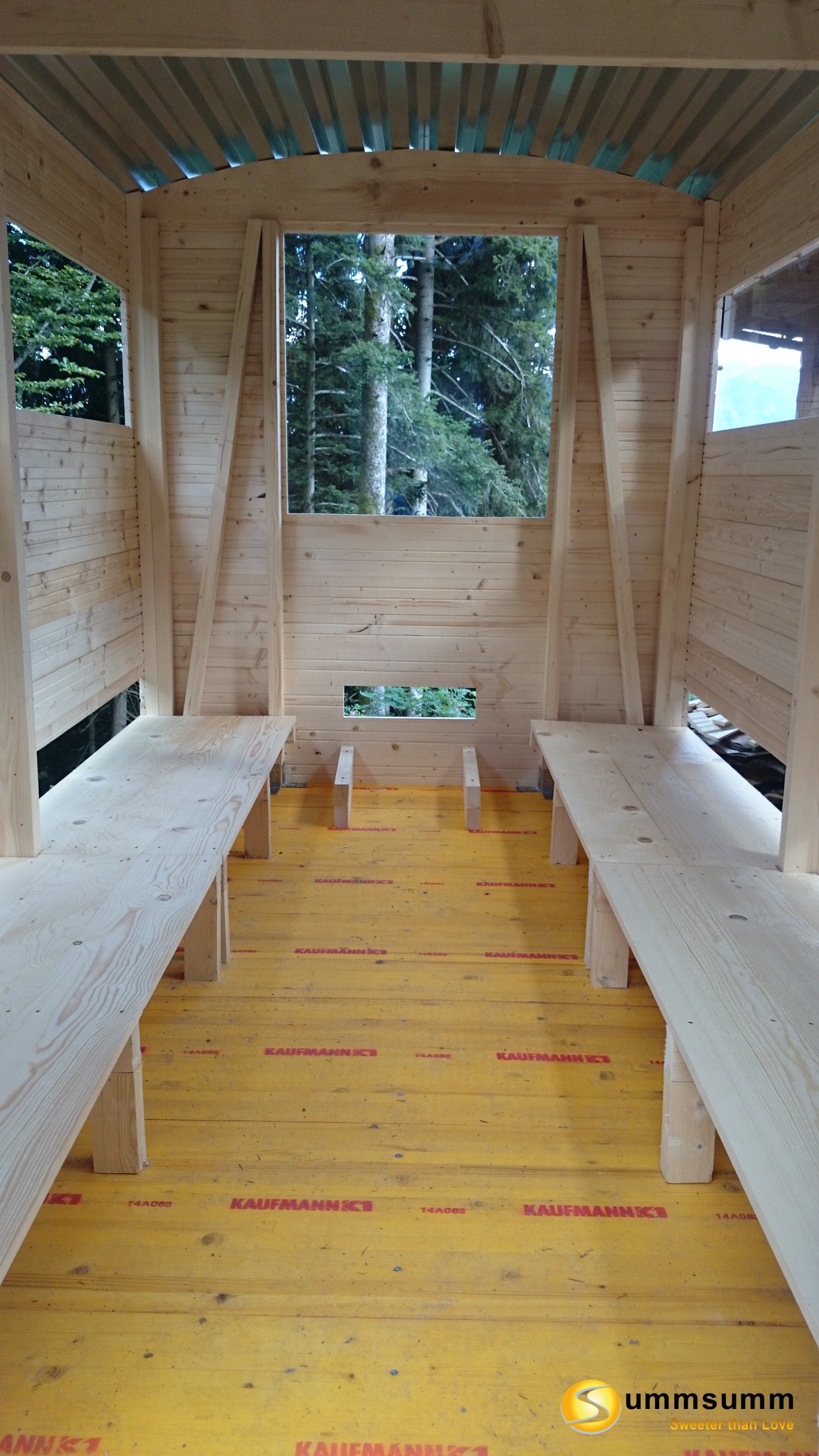
Walls:
To ensure that the superstructure has the same length at the top and bottom, a construction timber of 3.32 m is first attached on top of both sides. 12 paneling boards with 3.32 m are required on each side. The first panel is attached flush with the lower edge of the frame. On the third and fourth, the entrance hole is cut out with a height of 15 cm. After tithing, 3 layers of 15 cm wide paneling boards are attached on the sides and in the middle. The eleventh is cut out so that a window width of 44 cm is created. The last one then has to be sawn to the appropriate width.
For the front you will need 28 paneling boards with a length of 54 cm and 2 with a length of 2.03 m and a remnant for the arch.
For the back we saw 10 paneling boards to a length of 2.03 m and 12 to a length of 54 cm. For the third, we saw a 50 cm wide and 15 cm high entrance hole in the middle at a distance of 26 cm from the ground. The hole for the window must be 94 cm x 94 cm and is at a height of 1.03 m from the floor.
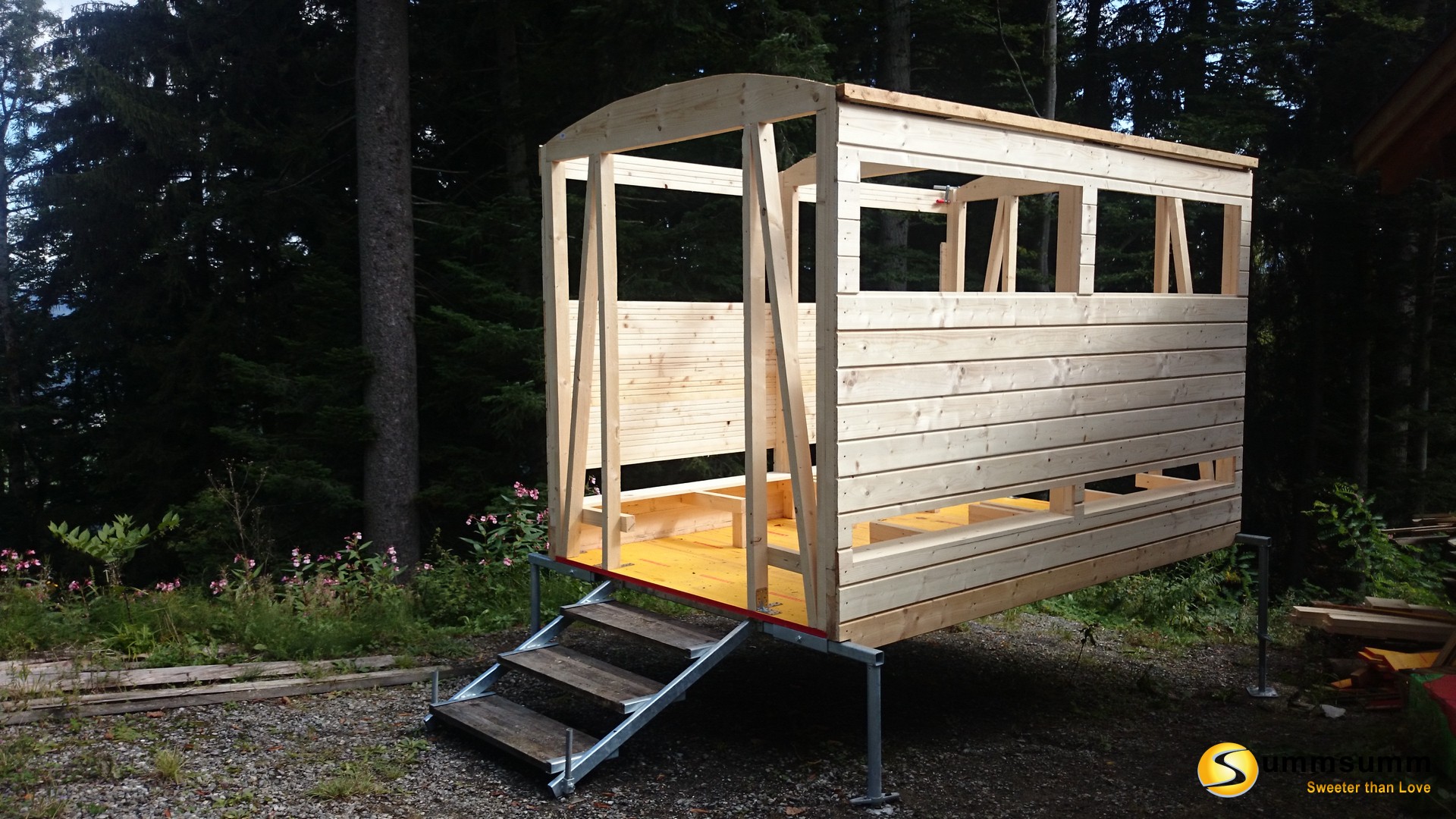
Door:
The door is inserted and screwed to the uprights. It should have some air, as a little moisture can easily expand it.
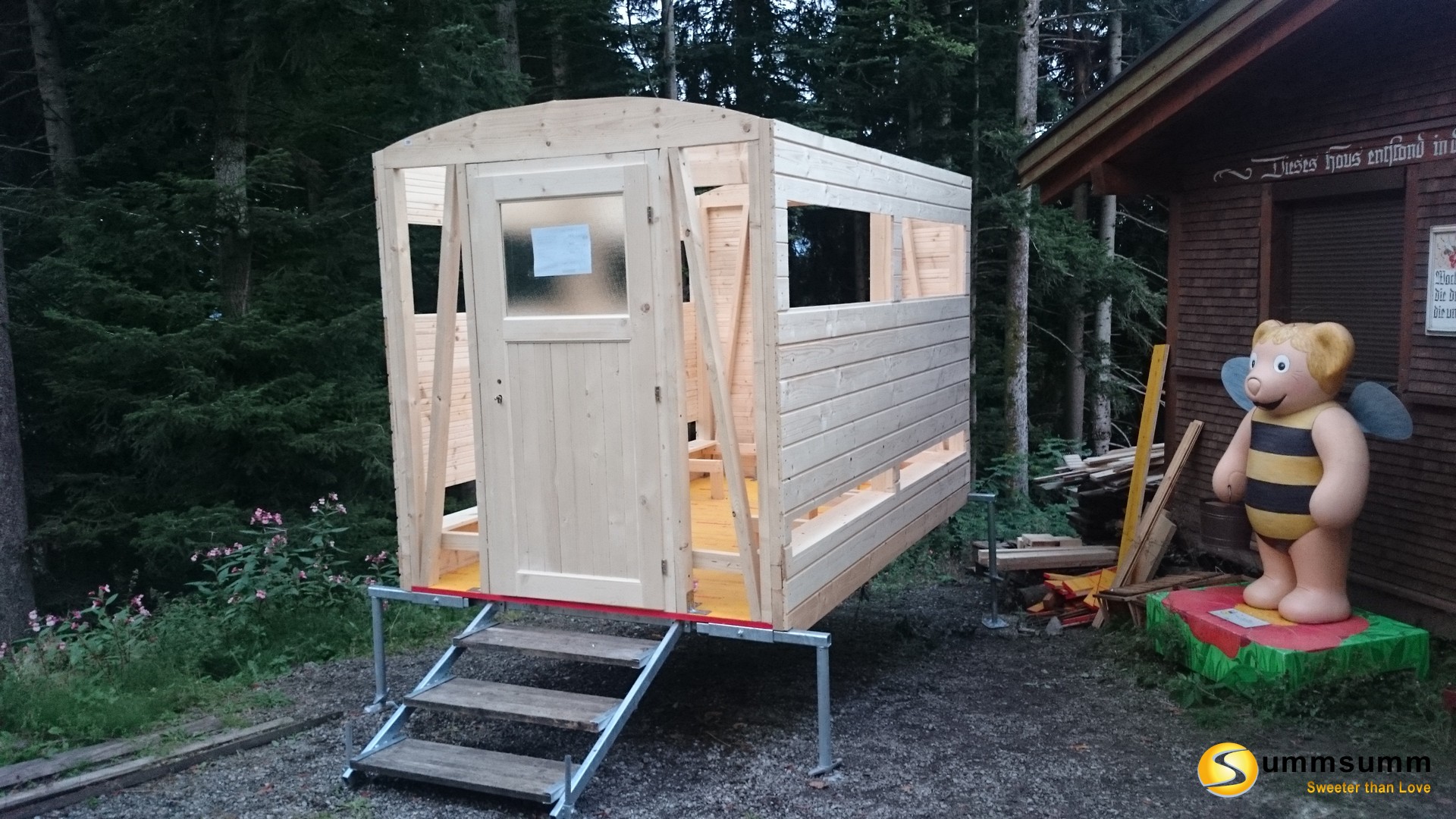
Roof:
First, the middle sheet is attached with 3 screws. At 40 cm, the front canopy is slightly longer than the rear. Now another sheet metal can be pushed underneath on each side and screwed on.
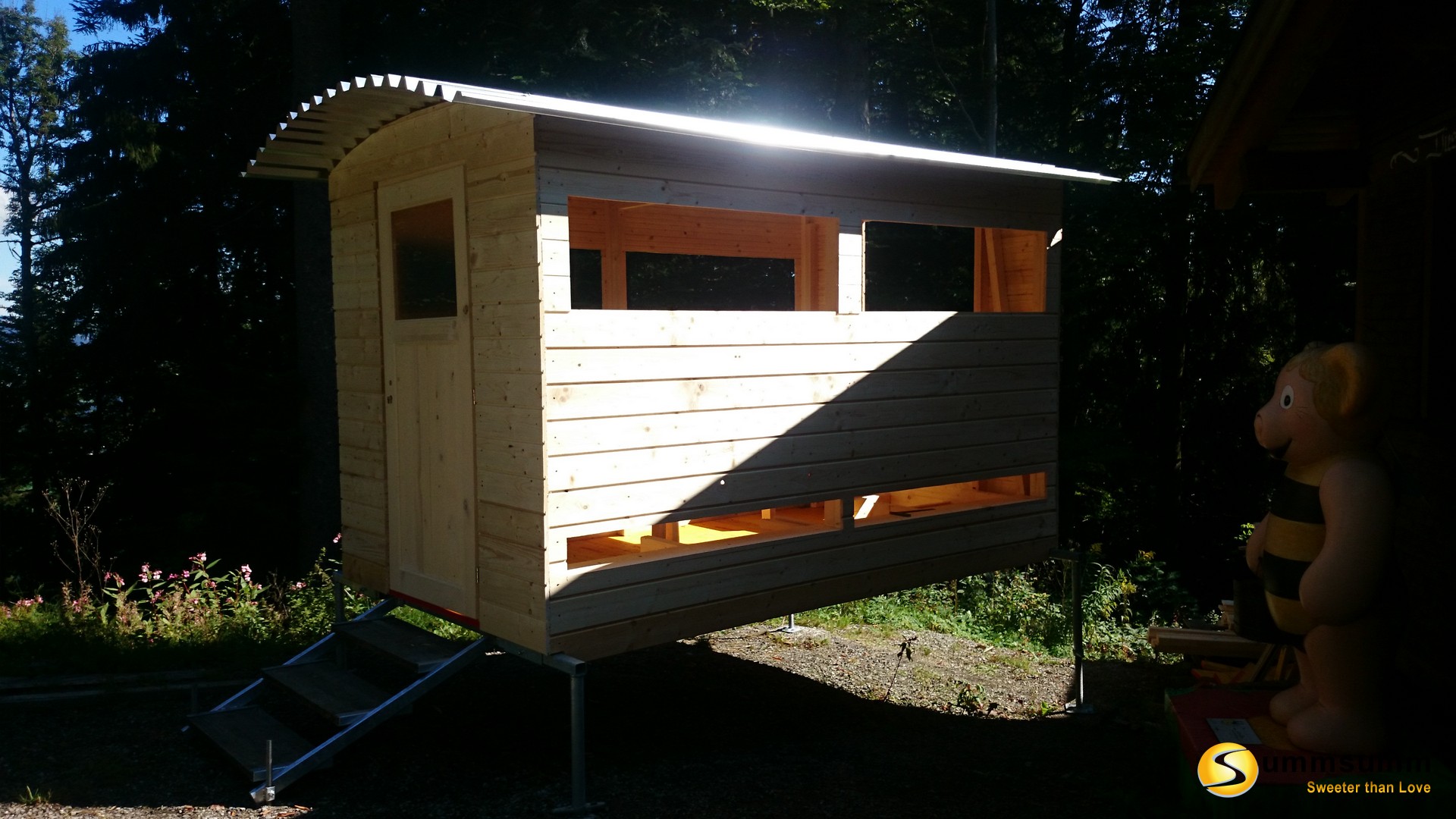
Window:
For the windows, 13 mm spacers are first sawn out of the round bar and drilled with a hole with a 5 mm diameter. The windows are installed with the plumber's screws.
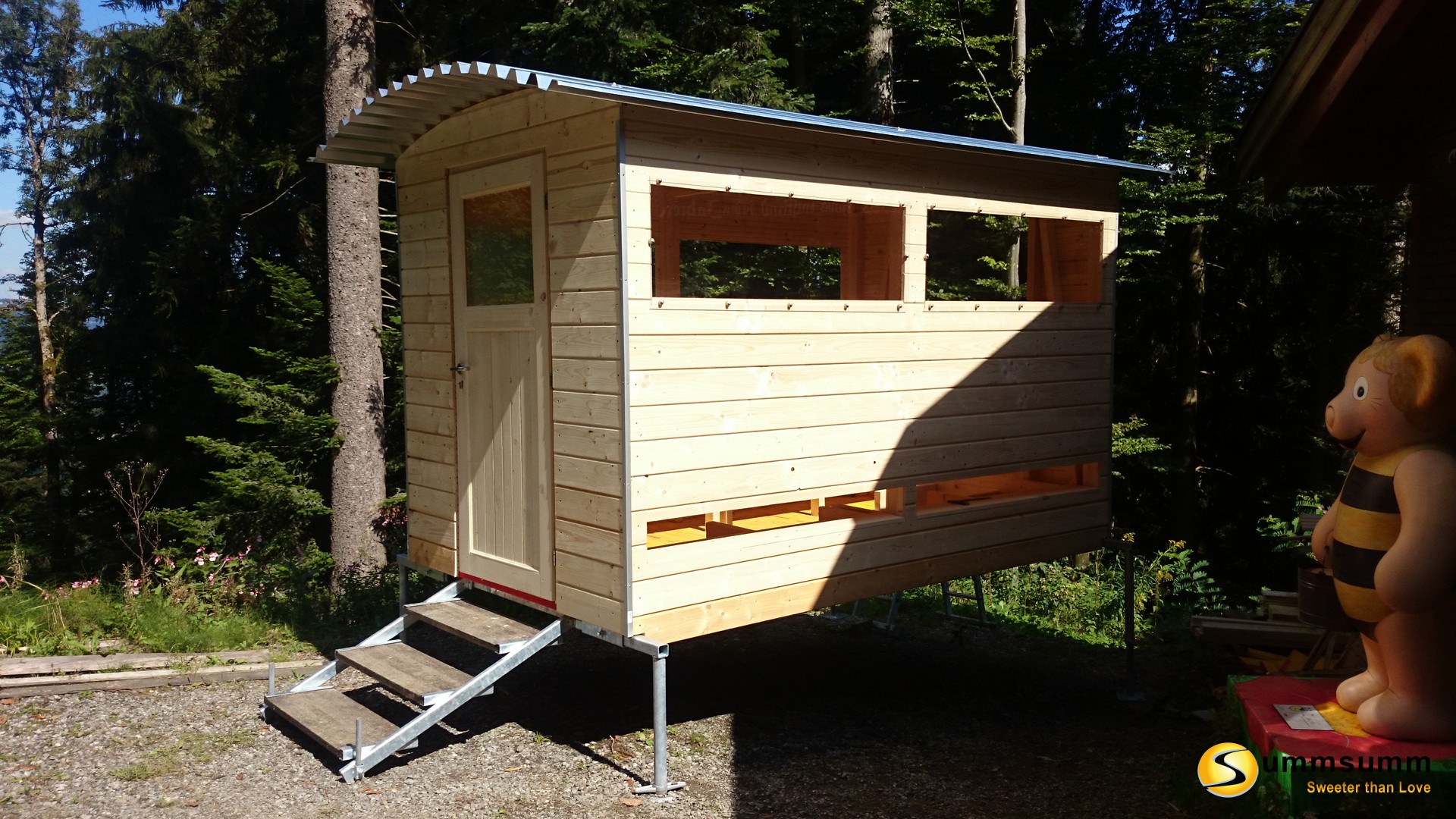
Decorative strips and roof reinforcement:
For embellishment, aluminum trim strips can be attached to all four corners and to the door frame. The side canopy is reinforced with wooden wedges.
